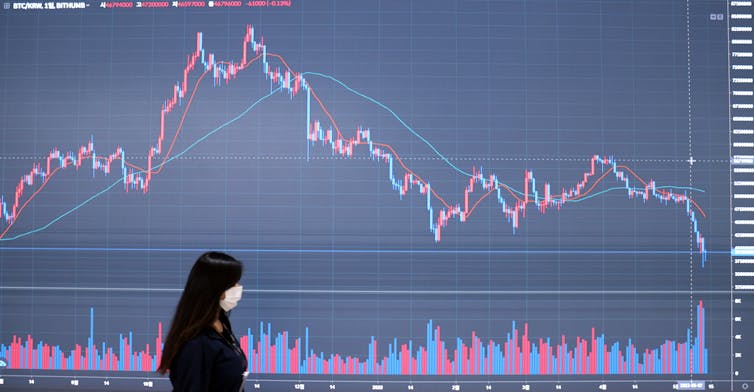The speedy enlargement of cryptocurrencies and digital non-fungible tokens have ruled information headlines lately. However now not many would possibly see how those modish packages attach in combination in a much wider thought being touted via some as the following iteration of the cyber web — Web3.
There are lots of misconceptions surrounding this buzzy (and, frankly, fuzzy) time period, together with the conflation of Web3 with Internet 3.0. Right here’s what you wish to have to learn about those phrases.
Contents
What’s Web3?
Since Web3 remains to be a growing motion, there’s no common settlement amongst mavens about its definition. Merely put, Web3 is envisioned to be a “decentralized internet ecosystem,” empowering customers to circumvent cyber web gatekeepers and retain possession in their knowledge.
This could be executed via blockchain; somewhat than depending on unmarried servers and centralized databases, Web3 would run off of public ledgers the place knowledge is saved on pc networks which might be chained in combination.
A decentralized Web3 would basically trade how the cyber web operates — monetary establishments and tech corporations would not want to be intermediaries of our on-line studies.
As one industry reporter put it:
“In a Web3 international, other people keep an eye on their very own knowledge and soar round from social media to e-mail to buying groceries the use of a unmarried customized account, making a public report at the blockchain of all of that task.”
Web3’s blockchain-based infrastructure would open up intriguing chances via ushering within the generation of the “token financial system.” The token financial system would permit customers to monetize their knowledge via offering them with tokens for his or her on-line interactions. Those tokens may just be offering customers perks or advantages, together with possession stakes in content material platforms or balloting rights in on-line communities.
To higher perceive Web3, it is helping to step again and spot how the cyber web evolved into what it’s now.
Internet 1.0: The ‘read-only’ internet
Pc scientist Tim Berners-Lee is credited with inventing the around the world internet in 1989, which allowed other people to link static pages of knowledge on internet sites out there via cyber web browsers.
Berners-Lee used to be exploring extra environment friendly techniques for researchers at other establishments to proportion data. In 1991, he introduced the international’s first web page, which equipped directions on the use of the cyber web.

THE CANADIAN PRESS/Justin Tang
Those elementary “read-only” internet sites have been controlled via site owners who have been chargeable for updating customers and managing the guidelines. In 1992, there have been 10 internet sites. Via 1994, after the internet entered the general public area, there have been 3,000.
When Google arrived in 1996 there have been two million. Closing 12 months, there have been roughly 1.2 billion internet sites, even supposing it’s estimated solely 17 according to cent are nonetheless energetic.
The following main shift for the cyber web noticed it increase from a “read-only internet” to the place we’re lately — a “read-write internet.” Web pages was extra dynamic and interactive. Other people was mass members in producing content material via hosted products and services like Wikipedia, Blogger, Flickr and Tumblr.
The speculation of “Internet 2.0” received traction after generation writer Tim O’Reilly popularized the time period in 2004.
Afterward, social media platforms like Fb, YouTube, Twitter and Instagram and the expansion of cellular apps ended in exceptional connectivity, albeit via distinct platforms. Those platforms are referred to as walled gardens as a result of their guardian corporations closely control what customers are ready to do and there’s no data trade between competing products and services.
Tech corporations like Amazon, Google and Apple are deeply embedded into each and every aspect of our lives, from how we retailer and pay for our content material to the non-public knowledge we provide (infrequently with out our wisdom) to make use of their wares.
Web3 vs. Internet 3.0
This brings us to the following part of the cyber web, through which many need to wrest again keep an eye on from the entities that experience come to hegemonize it.
The phrases Web3 and Internet 3.0 are incessantly used interchangeably, however they’re other ideas.
Web3 is the transfer in opposition to a decentralized cyber web constructed on blockchain. Internet 3.0, alternatively, lines again to Berners-Lee’s authentic imaginative and prescient for the cyber web as a selection of internet sites linking the entirety in combination on the knowledge stage.
Our present cyber web may also be regarded as a big report depot. Computer systems are able to retrieving data for us once we ask them to, however they aren’t able to working out the deeper which means in the back of our requests.

(Shutterstock)
Knowledge could also be siloed into separate servers. Advances in programming, herbal language processing, gadget finding out and synthetic intelligence would permit computer systems to discern and procedure data in a extra “human” method, resulting in extra environment friendly and efficient content material discovery, knowledge sharing and research. That is referred to as the “semantic internet” or the “read-write-execute” internet.
In Berners-Lee’s Internet 3.0 international, data could be saved in databases known as Cast Pods, which might be owned via person customers. Whilst it is a extra centralized manner than Web3’s use of blockchain, it will permit knowledge to be modified extra temporarily as it wouldn’t be allotted over more than one puts.
It might permit, for instance, a consumer’s social media profiles to be related in order that updating the non-public data on one would routinely replace the remainder.
The following generation of the cyber web
Web3 and Internet 3.0 are incessantly combined up for the reason that subsequent generation of the cyber web will most likely function parts of each actions — semantic internet packages, related knowledge and a blockchain financial system. It’s now not laborious to peer why there’s important funding taking place on this area.
However we’re simply seeing the top of the iceberg on the subject of the logistical problems and prison implications. Governments want to increase new laws for the entirety from virtual asset gross sales taxation to client protections to the complicated privateness and piracy issues of related knowledge.
There also are critics who argue that Web3, particularly, is simply a contradictory rebranding of cryptocurrency that won’t democratize the cyber web. Whilst it’s transparent we’ve arrived on the doorstep of a brand new cyber web generation, it’s in reality any individual’s wager as to what occurs once we stroll via that door.
Supply Via https://theconversation.com/the-next-phase-of-the-internet-is-coming-heres-what-you-need-to-know-about-web3-192919


